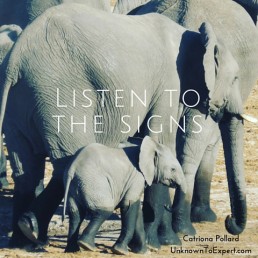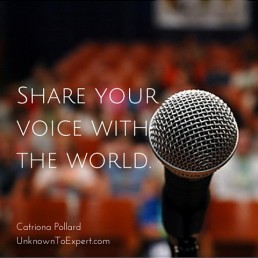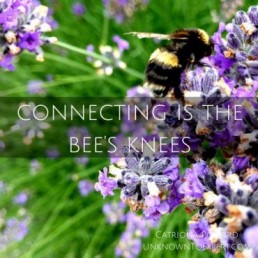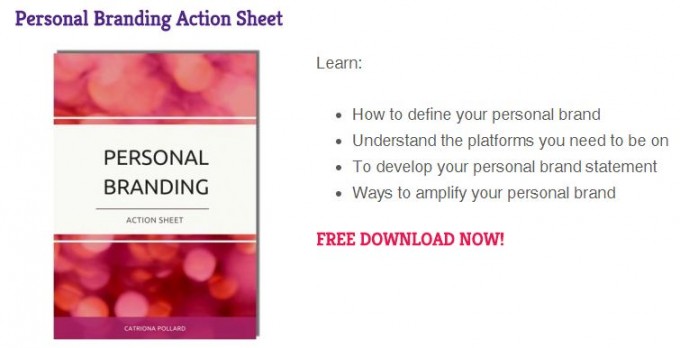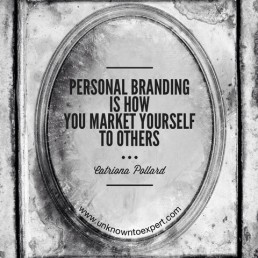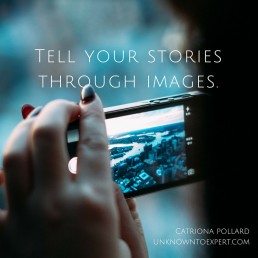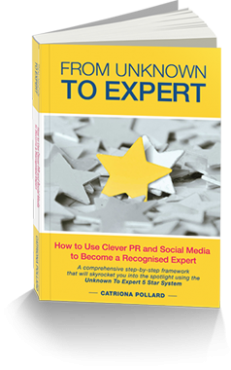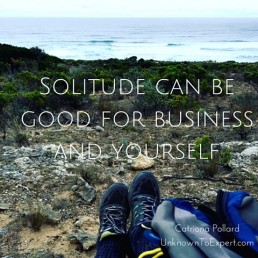Using humour on social media? Here's how to avoid controversy
Simply making someone laugh through a social media post can 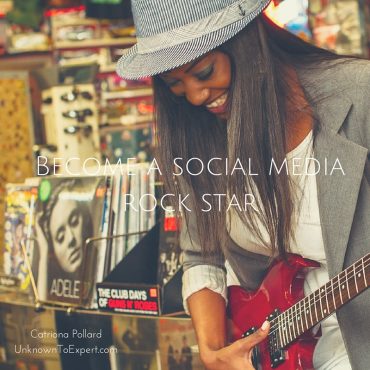 leave a lasting impression, which is why many businesses try to using humour through their social media platforms.
leave a lasting impression, which is why many businesses try to using humour through their social media platforms.
But is humour always the right tactic?
While introducing humour can be a fun way to bring personality to your business and boost your online presence, jokes often walk a fine line between being funny and just plain offensive.
In the past year, social media fails made by businesses around the world have reinforced the importance of asking yourself whether a joke will work well and when you shouldn’t head down that path.
With the reach of social media almost exponential, a poorly made joke has the capacity to taint your business and how your brand is perceived.
April Fool’s Day
Businesses can’t seem to resist the lure of April Fool’s Day. This year, there were a series of poorly executed jokes and social media mishaps, including Tinder’s announcement of ‘height verification’.
The convincing feature would allegedly stop users from ‘height-lying’, however the joke was not well received by the internet who criticised Tinder for introducing a feature that would body-shame.
From this blunder it’s clear it is important to really reflect on who your audience before you crack a joke on social media.
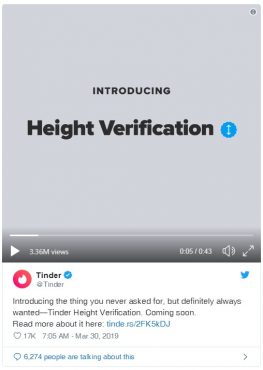
Time and time again, companies have made the mistake of making a joke at their own audience’s expense.
McDonald’s Australia made this slipup when they jumped on the April Fool’s bandwagon with their launch of the brand new ‘McPickle Burger’.
“It’s time to tuck into juicy, flavoursome pickles layered between melted cheese, ketchup sauce and toasted sesame seed buns,” read the fast-food chain’s Instagram post.
In an attempt to introduce what McDonald’s believed to be a disgusting menu addition, many didn’t see the humour. Instead, McDonald’s joke insulted all those who responded in excitement to try the new burger.

Never use race for humour
For most people, it’s common sense that jokes about race are never funny and of poor taste. They’re offensive, and can do a lot of reputational harm to a business. Satirical and ironic social media posts are often not well received, especially those based on race and outdated stereotypes.
However, in late 2018, Dolce and Gabbana received backlash for a controversial Instagram campaign that imposed racial stereotypes, as Chinese model struggles to eat various Italian dishes with chopsticks.
Labelled ‘crass’ and ‘condescending’, Dolce and Gabbana faced severe repercussions for their social media blunder. Their Shanghai runway show was cancelled, protest posters were plastered across the brand’s storefront throughout China and their products were pulled from Chinese e-commerce sites including the Chinese-language site of major online retailer Net-a-Porter.

Pop culture and current affairs humour
A joke made on a current event can be effective if they’re done in good taste. With viral sensations always making the rounds on social media, many businesses are quick to jump in and take advantage of any opportunity to reference pop culture and current affairs.
Last year, the Yanny v Laurel meme went viral across social media. This was followed by an insensitive tweet by the US Air Force linking the meme to the Afghanistan war, making light of drone attacks on bombing victims.
“The Taliban Forces in Farah city #Afghanistan would much rather have heard #Yanny or #Laurel than the deafening #BRRRT they got courtesy of our #A10,” tweeted the U.S Air Force.
After receiving strong backlash, the US Air Force deleted their tweet and issued an apology, however by this point the damage was already done

When taking on pop culture in social media, make sure you know who your audience are. Netflix has been clever in its use memes to push out and promote their own content.
Netflix US recently took to twitter to promote their new series ‘After Life’, poking fun at the bitter main character’s lovable canine companion.
“Ricky Gervais’ character in After Life puts the needs of his dog in front of literally everything else and that just feels right to me,” tweeted Netflix US.
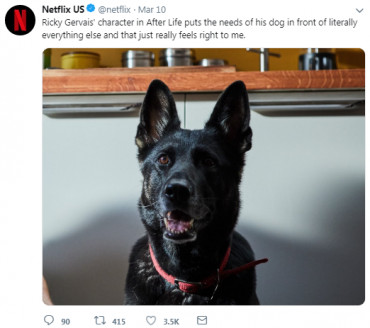
Derogatory Humour
Jokes made with the intent to degrade should never be posted on social media. Last year, Snapchat approved and published an ad poking fun at domestic violence, asking users whether they’d rather slap Rihanna or punch Chris Brown.
Snapchat was met with heavy consequences for their error, losing $800 million USD from its share price.
Humorous content on social media is a great way for small businesses looking to gain traction and drive awareness. However, it’s important to be consider the values of your audience, know what humour will work and also be aware the potential backlash you could get from a “harmless” post.
When it comes to social media, businesses need to think twice before introducing elements of humour and carefully curate content to make sure nothing can be taken in a way unintended.
Get more tips in this FREE ebook:
Sydney Public Relations Agency, CP Communications provides specialist media, traditional and online PR strategies that get amazing results. Contact us today. For more great tips visit our website www.cpcommunications.com.au.
What is 'fake news' and how can it damage your brand?
'Fake news' is constantly making headlines and even though 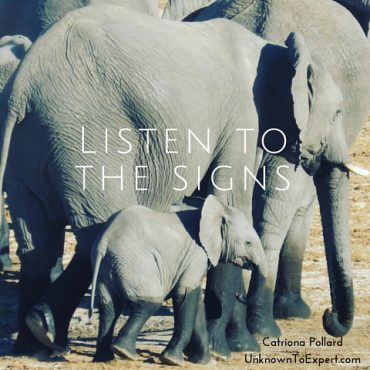 we’re aware of the practice, we don’t always register whether we are reading a fake story.
we’re aware of the practice, we don’t always register whether we are reading a fake story.
When dealing with the media, we avoid negative media coverage at all costs as it can be the death of a brand. But with the rise of fake news, how do you avoid getting caught up in convincing lies, or have your facts undermined by a power identity claiming that the news you are circulating is fake.
How can you spot fake news?
There are some key indicators you can identify to determine if a news story is fake, these include:
- A far fetched headline and is ‘click bait’ in nature.
- If the journalist or reporter has previously published bogus articles.
- The website isn’t a credible source and the story doesn’t have a credible source of information.
- The ‘credible’ source of information isn’t verified, has relatively few followers or was recently created.
Doing your own research and cross-checking stories are fundamental in determining whether a story is legitimate or not.
For example, several fake accounts began emulating “legitimate” news websites less than a day of the Notre Dame suffering extensive damage. There were hoaxes, conspiracy theories and misinformation spread around the cause and events surrounding the fire.
The below example is a screenshot of a fake Twitter account pretending to be a legitimate news outlet. This highlights the power of social media and how fast news can be made up and spread in such a short period of time.

What happens when real news is called out for being fake?
The term ‘fake news’ is also doing a lot of harm, as it can be used arbitrarily for the truths that we may not agree with. Is it a catch-all term for doubtful information? Is it used for false stories? Or does it involve the intention to deceive?
To preserve credibility in an age where fictional stories are undermining the object of maintaining truth, objectivity and critical thinking, it is important we uphold the following principles.
- Ensuring that the stories and information we put out are accurate, trustworthy and reliable.
- Always be transparent and have numerous sources readily available to back up claims.
If your brand or business accidentally reports the wrong information, it is better to be truthful when mistakes have been made in a time when everything can be easily fact-checked.
How do we shut it down?
The repercussions for both small and big businesses who get caught up in fake news can be significant, but there are steps we can take to stop it from spreading. These include:
- Let publications, especially traditional media and well-respected media outlets, become aware of the fake news that is circulating with credible sources to back up your claim.
- Utilise your brand’s social media accounts to debunk the circulating fiction.
- Let all stakeholders know that you have been victim of fake news to avoid any potential fallout. This could be through an email campaign, newsletters, and social media.
- Present the facts and back them up with relevant statistics or evidence to show you are being truthful.
- Act as fast as you can on all above advice. The longer you wait, the further the news will circulate and gain traction.
For example, US Senator Alexandria Ocasio-Cortez uses her Twitter and Instagram accounts to immediately call out fake news she has been subject to. This is one of the most efficient and effective ways to shut down the spread of a fake story, especially if there are millions of followers on the account.

While fake news is becoming more prevalent in daily reporting, there are simple steps you can take to differentiate what is being reported as fake and genuine news. It is equally important to ensure that the news we are sharing is legitimate and genuine. There are many different approaches to shut down the circulation of fake stories, but the key is to respond as quickly as possible with transparency.
Want to start building your own PR strategy? Download this FREE Public Relations Strategy Checklist:
Sydney Social Media and Public Relations Agency, CP Communications blends cutting edge offline and online PR and social media to help you gain a competitive advantage. Contact us today. For more great tips visit our website www.cpcommunications.com.au.
How to prepare for a radio interview
Radio interviews are an exciting opportunity to have your voice be heard and to help your company be 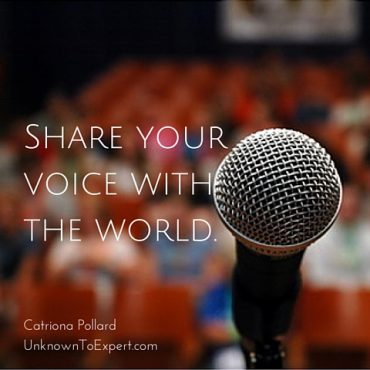 noticed. A radio interview can be a daunting experience if you are not adequately prepared. Take advantage of the opportunity and succeed in your interview by considering these tips.
noticed. A radio interview can be a daunting experience if you are not adequately prepared. Take advantage of the opportunity and succeed in your interview by considering these tips.
Know your medium
The nature of a radio interview delivers a one-on-one experience for the listener. To connect with your audience, you must to talk to, not at them.
Radio programs have different tones, whether casual and conversational, or more structured and formal. Knowing the tone of the program and tailoring your message accordingly will help you to connect with listeners.
Know your message
Having a clear and concise message is the key to a successful radio interview as it is more likely to be memorable in the mind of the listener.
It is important to present information in a succinct manner to get your point across. Long-winded answers will confuse your message and your listeners lose interest. This will also make it difficult for the interviewer in maintaining audience engagement with stimulating prompts follow up questions. Ultimately, your message must be delivered clearly, and in a way that resonates with the audience. For tips on how to create key messages go here.
Don’t oversell
Although you will have a particular purpose for your interview, whether to sell a book or to promote your website, it is important to not oversell yourself or your business. The audience is not interested in hearing a sales pitch, and your interviewer will not be interested in facilitating it. Instead of continually plugging your cause, subtly weave your call-to-action into your answers. This will also help to ensure that your answers are deliberate and purposeful.
Quick tips for a radio interview
- Headphones: Hearing the host’s voice and your own through headphones during the interview can be very distracting. Remember to relax, as this will help you focus.
- Visual gestures: Smile and use hand gestures during the interview. This energy will be translated into your voice and make you sound more natural.
- Provide bio: Send your bio and other information to your interviewer in advance. This will ensure that the host has a clear understanding of who you and your business are.
- Cheat sheet: Prepare a cheat sheet of keys points for your interview. This will help you to deliver your message and avoid getting side-tracked.
- Avoid jargon: Use simple language that your audience will understand and connect with. Jargon will only complicate your message and isolate listeners.
By using these tips, a radio interview can help you to invoke the interest of listeners to achieve your purpose. For other tips and advice about radio interview you can read this blog.
Want to start building your own PR strategy? Download this FREE Public Relations Strategy Checklist:
Sydney Social Media and Public Relations Agency, CP Communications blends cutting edge offline and online PR and social media to help you gain a competitive advantage. Contact us today. For more great tips visit our website www.cpcommunications.com.au.
Improve your LinkedIn profile with these 5 tips
Creating a LinkedIn profile has become an essential tool for personal branding.  It has revolutionised the idea of building and maintaining a professional virtual network.
It has revolutionised the idea of building and maintaining a professional virtual network.
Whether you’re a job seeker or building a network with other industry professionals, creating an eye-catching LinkedIn profile can help you stand out and be noticed by the right people.
Transforming your profile from good to great isn’t as time-consuming as you think. Making a few small changes can completely transform your LinkedIn Profile.
Here are some simple tips for improving your profile:
Start with a professional photo
A current and professional head shot is one of the most important elements of your profile.
Your profile picture will be the first impression you leave on potential employers and also encourages them to continue reading your profile
Take advantage of your bio
A strong bio will make it easier for potential employers, clients and business partners to find out who you are, what your strengths are and your career prospects. The bio not only allows you to list your biggest achievements, but also is an opportunity to project your personality and reflect your personal brand.
Play to your strengths
Completing your profile is the best way to showcase your skills and experience. Try to fill out as much of the forms as you can, making sure to identify all of your strengths.
Grow your LinkedIn network
When requesting to connect with someone on LinkedIn, it’s important to write a personal invitation to show your genuine interest.
Another easy way to grow your LinkedIn network is to sync your profile with your email address book. This enables LinkedIn to suggest people you could connect with.
Keep an up-to-date profile
Before you start networking on LinkedIn, make sure your profile is complete and up-to-date. A completed profile will help you build connections and expand your network, as it is more likely to appear in search results.
These tips can help you establish a foundation to boost your presence on LinkedIn. If used correctly, LinkedIn can help you establish credibility, build your reputation as an industry leader and open new opportunities through networking.
Learn more about how to create your personal brand by downloading our FREE Personal Branding Action Sheet here.
Why being authentic at all times is vital to your personal brand on social media
Being authentic on social media is incredibly important in building your personal brand says first-year congresswoman, Alexandria Ocasio-Cortez.
Rep. Ocasio-Cortez, has taken the American political scene by storm with her social media prowess. With over 2.5 million Twitter followers, social media has been instrumental in boosting her public image.
Alexandria recently spoke with Steven Colbert on The Late Show to share her social media tips.
https://www.youtube.com/watch?v=2f4gMQd_9Hs
Always be authentic
Alexandria’s top social media tip was to be authentic. Don’t try to be anyone you’re not.
A well-developed personal brand has the potential to propel your career and business. However, if you are not authentic, your audience will be the first to pick up on this. Your personal brand should always embody who you are and what you stand for.
Before you take to social media, make sure you have strongly defined the voice of your personal brand.
Here are some ways to build your personal brand like a PR on social media.
Be intentional
When creating a personal brand, you need to be strategic in considering what you wish to create and the intent it holds. The same goes for the creation of your social media profile.
Remember that all content posted to your social media profile will contribute towards how your personal brand is received and understood. When deciding which content best reflects your personal brand, consider sets you apart from competitors.
Be intentional in the curation of your content and make sure everything published resonates with not only the image you wish to create but also the audience you aim to resonate with.
Connect with your audience
Once you have established the type of content that your audience is interested in, make sure to be consistent in posting content. Regularly posted content will increase your visibility and positions you as a thought leader. Creating a content schedule can be a great way to keep on track across your social media.
Across all social media platforms, there is an abundance of opportunities to connect with your audience. Make use of these opportunities to post interesting content such as sharing your blog posts, interesting news articles, tips, infographics or perhaps new stats. But remember, it must be relevant to your field of expertise and the people you want to influence.
Optimise your profile
From the moment somebody first clicks and lands on your social media profile, they make a judgement. For this reason, it is important your profile reflects the reputation you are trying to establish.
Some tips for optimising your profile include a professional headshot, a great summary detailing what value you offer and your expertise and a comprehensive list of your professional career history. If you or your business has its own website make sure to include a link on your profile.
With these tips under your belt, it’s time to get your brand out there!
Be definitive about the strengths you bring to the table when crafting your personal brand and create content to embody these strengths. With social media, your personal brand can open the doors for career opportunities and new business ventures.
Want to learn how to craft the perfect personal brand? Download this free Personal Branding Action Sheet:
Sydney Social Media and Public Relations Agency, CP Communications blends cutting edge offline and online PR and social media to help you gain a competitive advantage. Contact us today. For more great tips visit our website www.cpcommunications.com.au.
The biggest PR fails of 2018 and what we can learn from them
As the year wraps up, it’s time to look back on the biggest PR fails of 2018.
Communications teams all over the world had their work cut out for them this year, with a series of totally cringe-worth PR mishaps. However, it’s not all bad news, there is always some value (and entertainment) in what can be learnt from reflecting on the poorly made PR decisions that led to severely damaged reputations.
From the clumsy PR manoeuvres of big businesses to celebrities gone rogue on social media, it’s safe to say these PR blunders take the cake.
Crisis Communications for Cricket Australia
The only way to successfully survive a crisis is to establish and maintain transparency, which Cricket Australia failed miserably in doing. The organisation failed to quickly disclose all the facts, which then aggravated the issue as mass speculations arose.
Crisis requires leadership and communication from the top down, and unfortunately for Cricket Australia, their lack of decisive action left the organisation and it’s major players to face horrible ramifications in the public eye.

Barnaby Joyce dragging Australian politics to new lows
Following the scandalous affair of former deputy prime minister Barnaby Joyce and his new partner Vikki Campion, the pair allegedly sold their story to the Seven Network for $150,000. This decision was a show of disgraceful PR, as Barnaby cashed in on his own infidelity, at a time conveniently leading up to the release of his own book. Barnaby’s lack of discretion exploited not only the dysfunctionality of his own personal affairs, but also the private life of his ex-wife, Natalie Joyce.

After 24 years of marriage, Natalie’s approach to the delicate situation was handled with the poise of a PR pro. Despite being an admittedly private person, Natalie felt compelled to speak out, to defend not only her children and own name, but also to empower all women across Australia. Natalie gave a powerful, unpaid interview for Women’s Weekly which spoke volumes for her character, demonstrating how greatly decisions made in the face of the media impact reputation.
Melanie Trump really doesn’t care
The first lady’s jacket made quite the statement, as she visited a children’s centre on the U.S border. In big letters the words ‘I really don’t care, do you?’ are emblazoned on the back of Melania Trump. Her spokeswoman states it was ‘just a jacket’, however from a PR perspective it is definitely a poorly deliberated fashion decision in the given context.

Perhaps it is ‘just a jacket’, but from a PR standpoint, what you wear has a great impact on your reputation. Take Meghan Markle, the Duchess of Sussex, who on her recent tour of Australia opted for a wardrobe of ethical and sustainable fashion. Not only were her fashion a great win for her reputation, but also elevated these ethical brands into public awareness in a way that campaigns and advertisements simply can’t.
Karl Stefanovic still making headlines
For the most part of 2018, Karl Stefanovic’s future at the Today Show was up in the air. Karl is still facing the repercussions of the poor (and very public) management of the breakdown of his marriage with ex-wife Cassandra Thorburn, as Today Show ratings continue to dive. Instead of keeping things under wraps, Karl enabled constant publicity surrounding issues on his personal life to interfere with not only his own reputation, but the reputation of his colleagues and the show.

Cassandra has positively taken advantage the media’s spotlight to cultivate her public image, opening up on her rediscovered resilience and the strong, confident woman she has become. As Karl has demonstrated, personal affairs should not be something to parade around the media however, the curated exposure of personal affairs can be used to shape a positive reputation.
Rosanne Barr’s ‘bad joke’
Following a racist tweet made in poor taste, Rosanne single handily destroyed her own reputation and career. Despite her apology, there are some things that can’t be undone. The tweet received widespread coverage in the media and was deemed irreparable by ABC, who axed the comeback of her show.
For better or for worse, tweets have come to craft reputations in the public eye. There are many celebrities that have managed to boost their reputations through Twitter. Pop powerhouse, Cher, has used her Twitter feed to give an entertaining insight into her stream of consciousness. Sometimes serious and sometimes political, but always funny and a great image to present to the media.
Always keep in mind that what is posted on social media is likely to influence public perceptions.

The key lessons to take away from 2018 are clear. It’s probably not wise to let racist comments slip, make a spectacle of personal affairs gone haywire or make politically incorrect fashion statements.
As we see off 2018, we can only look forward to what PR gems the new year has to offer.
Get more social media tips in this FREE ebook
Sydney Social Media and Public Relations Agency, CP Communications blends cutting edge offline and online PR and social media to help you gain a competitive advantage. Contact us today. For more great tips visit our website www.cpcommunications.com.au.
Why your brand needs a style guide
To resonate strongly with your audience, it is essential that your branding is consistent and sets the  right impression.
right impression.
By creating a sense of cohesion in everything your business communicates, your audience is more likely to identify with your brand. A great way to establish brand consistency is to create a style guide.
What is a style guide?
A style guide is a set of guidelines used to ensure that everything your business communicates is relevant and related to your organisational goals. It acts as a referencing tool to help your business stay on brand, focusing on content that upholds the values and objectives that sets your company apart from competitors.
How can a style guide help your business?
A style guide is a great way to keep consistency in your content and design. This is vital in maintaining your brands visual identity. Over time, this identity creates a relationship with your audience, instilling integrity, brand awareness, and ultimately brand loyalty.
What should be in your style guide?
Brand voice
Your brand voice should be easily described in 3 words. Let’s say your brand voice is passionate, enthusiastic and innovative. From here, you can elaborate on each of these. For example, passionate could extend further to driven, action-orientated and expressive. Now you can think about what is your business passionate about? How can you communicate this to your audience?
Let's say you own a coffee shop that is passionate about the environment and reducing waste. Your action could be to use bio-degradable cups and promote the use of reusable coffee mugs. You then take this to social media, promoting photos of your coffee shop taking on this initiative with the hashtag #zerowaste. You could go one step further and write a blog post about the harmful effects of using plastic coffee cups.
Colour
Using a style guide to introduce a colour palette for your brand encourages consistency across all communications and content. When your audience sees these colours, they will come to recognise and recall your brand. While it may not seem of priority to designate a colour theme, these colours will come to feature on advertisements, uniforms, social media, your website, in-store merchandising, fonts and logos. Studies have shown different colours provoke different emotions. If your business doesn’t already have a colour palette, do your research and see how you can use colours to communicate to your audience.
Font
Fonts are similar to colour, as they lend themselves to becoming visual cues for your audience. Once you choose a font you feel is appropriate for your business, it should remain consistent throughout all your content.
Now that you have your style guide, creating a cohesive social media strategy for your brand is easy. Make sure your posts use language that sticks to your brand voice, all branded content follows the colour theme and post content relevant to your business and interest of your key audiences. By doing so, the online identity of your brand is much more likely engage and resonate with audiences.
Want to build a strong personal brand? Download this free action sheet today!

Sydney Social Media and Public Relations Agency, CP Communications blends cutting edge offline and online PR and social media to help you gain a competitive advantage. Contact us today. For more great tips visit our website www.cpcommunications.com.au.
5 ways Instagram should be used by your business
From Instagram’s launch in 2010, it has become a social media power house. 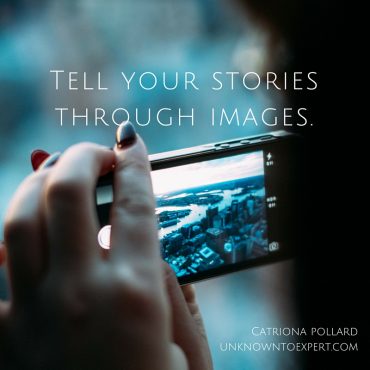 Instagram is a photo and video sharing application that allows users to generate, edit and post their own content for their Instagram following.
Instagram is a photo and video sharing application that allows users to generate, edit and post their own content for their Instagram following.
Instagram is a great way to create a relationship with your audience, creating a community that supports the growth and development of your business or brand. For instance, the Instagram profile @CatrionaPollard is used as a platform to showcase contemporary art by artist Catriona Pollard.
With the rise of “hashtags”, “regrams”, “tags” and “mentions”, it’s no surprise Instagram can leave you feeling overwhelmed, especially if you’ve never used this social media platform before.
Here are 5 ways you can start using Instagram in your business.
1. Generate content
What is your purpose of incorporating Instagram in your business?
Your answer will ultimately determine what your content strategy is. It is crucial to keep your profile up-to-date, regularly posting content that is both engaging and targeted to the interest of your followers. When getting started, don’t spend time worrying about creating a mass following.
Develop a brand story through your Instagram profile by constructing a narrative though content. Remember to speak to your audience’s interests and in return, their engagement through comments and likes will shape the relationship your brand develops with your following.
2. Instagram Stories
Instagram Stories have a slideshow format and are viewable for 24 hours. Take advantage of this feature, giving your audience an insight into your brand and creating a direct connection. For example, @CatrionaPollard has utilised the Stories feature to bring her followers behind-the-scenes on her creative process and exhibitions.
The benefits of using Instagram stories for your business are:
• Show your audience behind-the-scenes action. A quick and easy way to post content, as it doesn’t have an expectation of high quality
• Opportunity to use different content styles, e.g. short videos, photos, Boomerang (real-time GIFs)
• The Instagram Stories are located at the top of follower timelines, meaning your content is easily accessible
3. Create an eye-catching bio
Your business’ bio is one of the first things your audience will see when they view your Instagram profile. Make sure you keep your bio up-to-date, whether it’s including your next event, promotion or a product launch.
Underneath your bio is the only space where you can include a clickable link. Take advantage of this space by including a clickable link to your website, event registration, app download or product link.
4. #Hashtag
The Instagram language is all about hashtags. Reaching your target audience requires you to get specific with your hashtags. Users can search by hashtags, so adding the right ones can be vital in improving your social media presence, obtaining high visibility and reach. To make the most out of the hashtag feature, create a list of hashtags that could be used to accompany your posts. These hashtags should relate to your business and the space your brand exists within.
For example, @CatrionaPollard’s Instagram showcases her artworks and exhibitions, hashtags that are more likely to reach the target audience should reflect the content of her profile, for example #art #contemporary #sculpture #creative and #gallery.
5. @Tag and mention
Instagram is notorious for being the social media channel that facilitates collaboration and sharing customer success stories. If you want to get noticed, tagging a specific account will most likely result in a response.
Tagging your users is a great way for your brand to reach out and form a genuine connection with your following, or even an opportunity to network with other businesses.
While social media has the capacity to grow your business, developing a wide reach and high engagement with your target audience doesn’t happen overnight. Take the time to invest in growing your Instagram community, as this platform might be the star of your next social media campaign.
Get more tips in this FREE ebook:
Sydney Public Relations Agency, CP Communications provides specialist media, traditional and online PR strategies that get amazing results. Contact us today. For more great tips visit our website www.cpcommunications.com.au.
Top tips for making a newsworthy story
Cutting through the noise of today’s media can be a challenge when looking to gain exposure 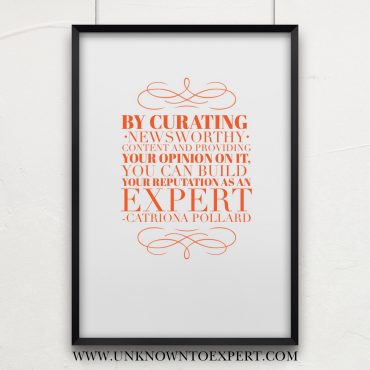 for your story. So how can you capture the interest of your audience? What makes a story worth covering and what can you do to make your story more newsworthy?
for your story. So how can you capture the interest of your audience? What makes a story worth covering and what can you do to make your story more newsworthy?
To increase the newsworthiness of your writing, there are a few key elements that should be considered when crafting your story.
Knowing your audience
It is important to always make sure you know who your audience is before you get writing. Knowing what your target audience is talking about and what content they are engaging in, will best equip you in capturing their interest.
This information will help you identify what topics and issues will be of most interest and what publications you will find success pitching to. Say your audience are women aged 25 – 40, seeking advice on health, relationships and wellbeing. From here you can identify a variety of publications where your story has the best chance of being picked up. For example, if your story focuses on nutrition tips for mental health, you can identify such as Women’s Health and Woman’s Weekly.
Keep your story current
In the competitive industry of journalism, timing is a key component of creating a newsworthy story. Always be aware of what’s going on in the media and take advantage of stories that are receiving heavy coverage in the media. Breaking news stories, latest trends and current affairs are more likely to capture your audience’s attention and can be a great source of newsworthy inspiration.
Including a local angle
Consider where your story took place and who it impacts. Your audience is much more likely to be interested in stories of close proximity and relevance. Leveraging a local angle to your story is a great way to increase newsworthiness and ensure your story resonates with readers.
For example, you are to write a piece on an art exhibition that is being held in the local area. The nature of this story lends itself to local media, and is more likely to gain coverage in local publications, newsletters and magazines.
Appealing to human interest
Finding an element of human interest in your story allows you to appeal with audiences through emotion. By evoking an emotional response in the reader, these stories are often a great way gain coverage in the media.
Who you should and shouldn’t be pitching to are a big part of creating a newsworthy story. Consider a story following wild life volunteers on a mission to save orphaned animals. A story of this nature would likely gain coverage in a publication like ABC News or publications interested in animal rights. Keeping an eye out on stories already out in the media is a great way to get a feel for the type of stories certain publications are likely to publish.
Who are the key players?
Prominence of those involved greatly attribute towards how newsworthy your story is. While not all stories may involve leading celebrities or politicians, find out who the key players of your story are and use them to evoke interest.
Media and social media monitoring
Keeping an eye on conversations in the media and social media is a valuable tool when creating newsworthy stories. Proactive media and social media monitoring not only keeps you up to date, but will also help you identify what stories work.
With our audiences bombarded daily with new information and content, it is crucial to use these newsworthy angles to strike interest in the reader, setting yourself above this noise. Always consider these elements when approaching your story, as they are tools that will enable your writing to be both newsworthy and of greater value to your audience.
Want to start building your own PR strategy? Download this FREE Public Relations Strategy Checklist:
Sydney Social Media and Public Relations Agency, CP Communications blends cutting edge offline and online PR and social media to help you gain a competitive advantage. Contact us today. For more great tips visit our website www.cpcommunications.com.au.
Article writing is easy when you know how
Articles are an excellent way to get media coverage for you or your business. Although, writing the  article alone will be of little benefit if careful thought hasn’t been applied or if the article isn’t appropriate to the audience or engaging to the publication.
article alone will be of little benefit if careful thought hasn’t been applied or if the article isn’t appropriate to the audience or engaging to the publication.
Capturing the interest of a journalist is crucial and it takes the article to have specific structure and hooks to achieve this. Whilst the success of your article relies on some crucial steps, they can be easily be achieved by you or your business and can in fact transform it.
Choose a topic and angle
Choosing a topic is the first step in writing an article for the media. Make sure the topic is relevant to you or your business, interesting and informative to your audience, intriguing to the publication you are pitching to, timely to the events that are happening in your field, purposeful and calculated.
Your article could be about; identifying a problem & giving a solution, suggesting a new approach, describing the lessons learnt from a project and their applications to other areas or even how to do aspects of your business.
For example, I regularly write articles on topics relating to my business such as “how to write a media release”, “how to develop a PR campaign” and even “how to write an article”!
3 things to think about when writing your article
In every article, including information that involves the following three is essential in making sure your article is successful and is not wasting yours or the publications time.
- Is my article objective?
You need to ensure that you have a purpose for writing the article. Does your article have a goal? What are you trying to achieve through this article? - Is my article informative?
Make sure your article isn’t wasting yours or anybody else’s time by making sure it is written in an informative and helpful manner to your audience. Make sure your serving the purpose of the article and including as much important and relevant details as possible. - Is my article entertaining?
Whatever you are writing about and whoever you are writing for it is important that your article is entertaining and/or interesting to your audience. For example; As someone who works with people and companies that are trying to learn the basics of PR, I write articles that are informative, with tips and ‘How To’ guides on simple PR strategies that can be easily adopted by those reading. This makes my articles very helpful to my clients, therefore making them interesting to my audience.
Adapting to the publication
Each publication will have a different style of writing, language, layout etc. So it’s important that you do a bit of research yourself about the publication and their work and try to implement the styles of that publication to your article.
For example, a medical journal will expect very technical information, but a magazine about knitting will want tips, techniques & photos of your knitting projects. Find out how you can be the media's first point of contact here.
Take a look at the publications editorial guide (if they have one, most do)
It is important to take a look at these before sending in an article.
For example, Women's Agenda want articles that help their readers in their personal and business lives. A lot of the audience of Women's Agenda run their own businesses, so an article on tips, strategies and techniques that assist in running a business is what the editor wants to see.
A few more tips before you send off your article...
- For your best chance, find out the number of words the editor wants and stick to that as much as possible.
- The deadline. This is so essential to remember as every publication runs to editorial and advertising deadlines. Therefore, sending in your article prior to the deadline is crucial.
- Clear sentences, using sub headings, dot points and bolding to communicate key points.
- Proof reading is important, but not just by your eyes. Get a colleague to take a look over your article for fresh eyes and point of view.
- Get creative and write something unique. I've learnt from ancient story tellers in the past to write incredible articles.
In my book, 'From Unknown To Expert', I explain in detail how you can be sharing your stories. Get your copy HERE.
Sydney Public Relations Agency, CP Communications provides specialist media, traditional and online PR strategies that get amazing results. Contact us today. For more PR tips see www.PublicRelationsSydney.com.au
The power of digital detox
My business is largely reliant on the internet, this making digital detox’s impossible for me for at least 5 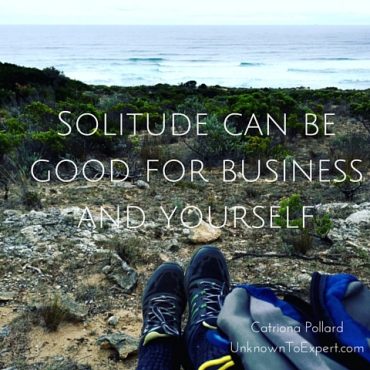 days out of 7.
days out of 7.
Therefore, having a digital detox holiday is a must.
When I escaped the online world completely for 3 weeks whilst travelling through Myanmar (Burma), not only due to lack of reception but personal choice, it was a true blessing.
No emails, no social media, no internet. I managed to break my streak only once when letting my parents know back at home that I wasn’t one of the travellers killed in the plane crash which took place in the Myanmar mountains (good reason? I think so). Other then that one exception, I made it through with minimal effort.
This year, my opportunity came in the form of a yoga retreat. Much to my surprise, not only was I the only one who decided to ditch their devices, but I was the only one who conceived the idea! Nobody else (even the teacher) even thought about detoxing despite the perfect setting to do so.
What I missed
I crave time away from being connected and constantly available. I find it hard to do at home, but when I’m away and set my intention I find it oh so easy. I love taking photos of the sunset and sunrise, and at the retreat I couldn’t take photos of them and share them. So instead, I simply watched them.
At the retreat, I mostly missed “The Google” (as my mother calls it). I wanted to look up the chef’s blog and recipe book, I wanted to know the weather for the day; I wondered if my next accommodation was confirmed. I was halfway through an episode of Downton Abbey which I couldn’t finish.
I did the old fashioned thing and wrote stuff I wanted to look up later. Like on, you know, a piece of paper...
Addicted to digital
Over 60% of people admit to being addicted to the internet and their devices. I really think it’s worth asking the question...would I find it difficult to not take my phone with me on holidays, to grab a coffee, to go for a walk, to go to bed, to...?
I spend every working day sitting in front of screens and I go home and have my phone and iPad nearby.
I check my email first thing and last thing in the day – as I do the Facebook, Twitter and Instagram twirl. Like most professionals, I spend up to 10 hours a day online.
Our constant need for new stimulation, endless access to information and social connection is changing our brains. It’s impacting our long-term memory as well as our mental wellbeing.
At times I wonder if our addiction to digital is making us to lead lives that are a centimetre deep, and a kilometre wide.
I don’t think there is anything wrong with digital. In fact, I love so many things about the internet and social media. But I do think there are very many valid reasons not to step away from digital from time to time. And I think it’s so important to question our use of digital and digital devices.
Do nothing. Be bored.
Amazing things happens when you are not constantly digitally stimulated. Your mind quietens down. When was the last time you experienced that? Noticing your breath, hearing your heart beat and really taking notice of your surroundings.
Walking down the street with your only view being the piece of glass in your hand checking Facebook means that you’re missing the moments in time that nature gifts us; a beautiful sunset, the sun through the trees or leaf drifting by in the breeze.
Be brave, and feel the sensation of being bored. Don’t pick up the phone. Just daydream instead. Even try meditation.
Turning back time
We have seen noticeable resurgence in creating traditional crafts in the past few years and I think it’s a reaction to how virtual our lives have become. Maybe think about how you can incorporate a form of ‘slowing down’ into your life.
For me, I spend hours at a time sitting on my lounge room floor surrounded by leaves, twigs and vines, weaving sculptures. A practice I found, after searching for more creativity and less computers in my life.
Focussing on one task
The average employee checks 40 websites a day, switching activities 37 times an hour, changing tasks every two minutes. That constant task changing is impacting productivity.
I used to have a million tabs open, plus email. Now I find them so distracting, I shut it all down when I’m working on a task such as writing. I didn’t use to find it a problem, but now with cognitive overload I find it much more productive to focus on one task.
I’m enjoying the process of diving deep into one task. For a multitasking junkie, trust me, I never thought I would say that!
The internet is a truly important and significant part of my life which not only supports my social life and Google curiosity but my entire business. It’s not a concept that for me, and I believe many others, is going away any time soon. That’s not a bad thing! The internet can be a curse but it too, is truly a blessing. But in conjunction with my already existing efforts on digitally detoxing with my annual holiday, I am trying to expand my efforts beyond the vacation and into my day to day life with digital free rituals. It may take some time….
Get more tips in this FREE ebook:
Sydney Public Relations Agency, CP Communications provides specialist media, traditional and online PR strategies that get amazing results. Contact us today. For more great tips visit our website www.cpcommunications.com.au.
What social media site should you be using?
Social media can be tricky at times, especially choosing the right platform. But how do you choose what platform to use?

Do you want your audience to engage with content? To share it with friends maybe? Once you have determined your goal you must pick the platforms your audience engage with the most. Focus on one or two to start off with and try other platforms as you learn more about your audience.
Here are some of the most popular social media sites and how you can use them to your advantage.
Twitter works better when used as an individual as opposed to a brand. It’s great for connecting with other influencers, getting the latest news and also to promote your own thought leadership and personal brand. Twitter is also a useful hub in researching and finding information about a topic and your target audiences. One of the biggest tips for Twitter is to stick to your niche, don’t try to be everything to everyone. The platform is full of communities ready for you to tap into.
Get 8 tips on how to use Twitter to enhance your social media influence
Facebook is a great platform for customer engagement and feedback. By gaining more followers, your business can capitalise by sending a message directly out to the audience. Facebook can also be used to drive customers back to your website by sharing interesting blog posts, the latest offers or other engaging content. This can be increased by promoting your posts with Facebook advertising.
Get more tips for using Facebook for business
Instagram is all about visuals. It is great for B2C businesses or those with a creative element. With Instagram you have to get arty, and by using hashtags you will be able to gain likes and followers quickly. Business owners who want to have a bit of fun, or have a visually aesthetic work place, this is perfect.
Find out how you can make Instagram work for you
LinkedIn is a B2B must have. LinkedIn was created for building professional relationships and networking. By using a Personal profile, you can network and build influential contacts. By creating a company page, you can position your company in your relevant industry and connect with people who can help you build your brand.
Get LinkedIn tips for thought leaders
YouTube
If you want to showcase your presenting and speaking skills, this YouTube is for you. YouTube is great because it puts a face and personality to your business. Creating videos can be resource heavy but it is one of the most engaging ways to present your content and connect with your audience.
Learn more about YouTube marketing to help you go from unknown to expert
Get more tips in this FREE ebook:
Sydney Public Relations Agency, CP Communications provides specialist media, traditional and online PR strategies that get amazing results. Contact us today. For more great tips visit our website www.cpcommunications.com.au.


